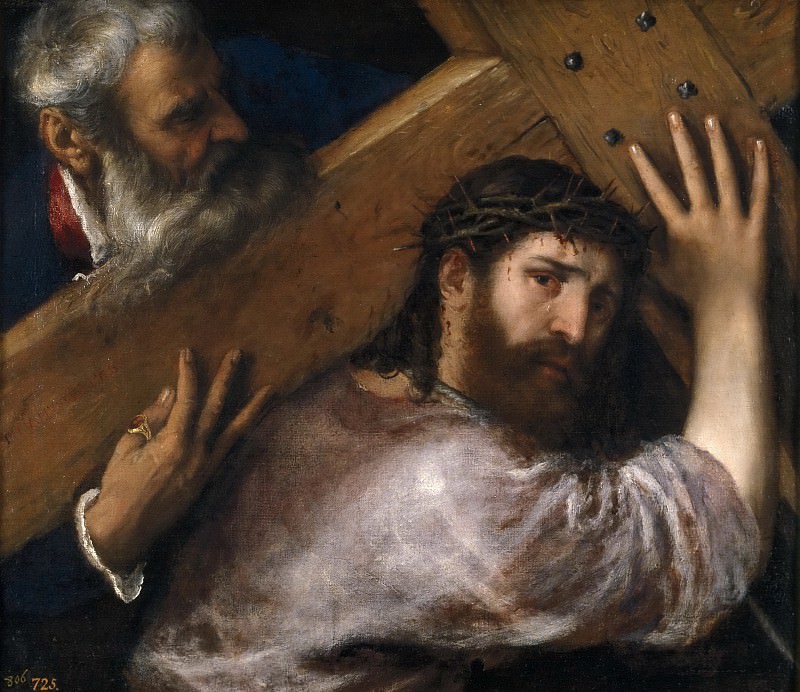Tiziano, Vecellio di Gregorio – Cristo con la Cruz a cuestas Part 1 Prado museum
Part 1 Prado museum – Tiziano, Vecellio di Gregorio -- Cristo con la Cruz a cuestas
Edit attribution
Download full size: 2959×2556 px (2,1 Mb)
Back to album: Part 1 Prado museum
The great Renaissance artist Vechellio Titian, who lived in the Renaissance Era, created his painting The Carrying of the Cross around 1565. He was a follower of the theme of martyrdom and the new Baroque aesthetic, which is clearly evident in this painting. Since 1850, his work, brought from the Barbarigo Collection, has been under protection in the Hermitage Museum. The artist’s idea of depicting Jesus Christ in this picture is not in the image of a deity ruling over all things, but in the image of a sufferer, firmly enduring his physical and mental torment for the salvation of mankind.
Description of Titian Vechellio’s The Carrying of the Cross
The great Renaissance artist Vechellio Titian, who lived in the Renaissance Era, created his painting The Carrying of the Cross around 1565. He was a follower of the theme of martyrdom and the new Baroque aesthetic, which is clearly evident in this painting. Since 1850, his work, brought from the Barbarigo Collection, has been under protection in the Hermitage Museum.
The artist’s idea of depicting Jesus Christ in this picture is not in the image of a deity ruling over all things, but in the image of a sufferer, firmly enduring his physical and mental torment for the salvation of mankind. Titian often took biblical stories as the basis for the subjects of his paintings. This time he decided to depict the scene of the carrying of the cross by the son of God to the place of his execution on Golgotha.
There are two faces on the canvas, close to the viewer. The central figure on the canvas is Jesus, whose eyes show weariness at the heavy burden of the cross and the suffering suffered and still awaiting him. Thin streams of blood trickle down his temples and neck from the thorns of the crown of thorns that have been thrust into his head. Using the dark background and the strict, straight lines of the cross, Titian emphasizes the softness of the silhouette and the pale complexion and hands of the Savior dressed in a pale olive robe.
The image of the second man, Joseph of Arimathea, is shrouded in the shadow of half-light. He tries to help the martyr and take some of his heavy burden upon himself. The gray in his beard and hair blends in with Christ’s garments. It is these techniques that help the artist make the image of Joseph vague and almost incorporeal, focusing attention on the main character.
Titian depicts the face of Christ turned towards the audience. Probably so that when you meet his eyes, everyone will remember the sacrifice made by the Savior, and think about how much it was worth to him.
Кому понравилось
Пожалуйста, подождите
На эту операцию может потребоваться несколько секунд.
Информация появится в новом окне,
если открытие новых окон не запрещено в настройках вашего браузера.
You need to login
Для работы с коллекциями – пожалуйста, войдите в аккаунт (open in new window).




















You cannot comment Why?